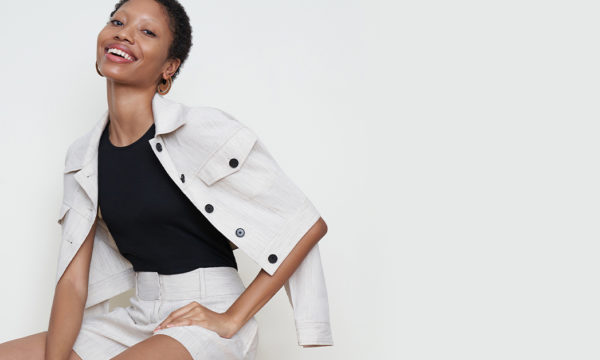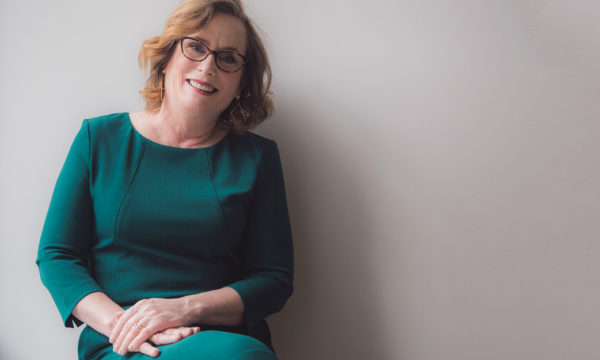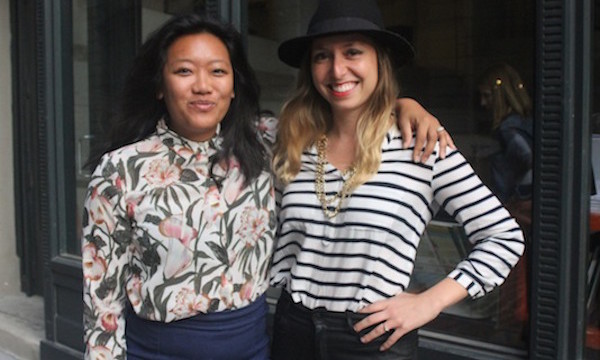Lawyer Julie Fink on Winning a Supreme Court Case and Defending Gay Marriage
December 14, 2017 | Filed in: Woman of the Week
Last summer, attorney Julie Fink left her job at a white-shoe law firm to start a new practice with her longtime mentor, Roberta Kaplan, with whom she worked to overturn the Defense of Marriage Act in 2013 (thereby making gay marriage legal and recognized by the federal government). Committed to civil rights cases and pro bono work, Kaplan & Company is now ten lawyers strong and growing. We recently visited Julie at her office in the Empire State Building to discuss public speaking strategies, Edith Windsor, and what it’s like to argue a case before the Supreme Court.
WHEN I WAS A KID, my parents had a phone in their car, and I would pretend that I was taking important business calls on it—which is how my job still feels sometimes. In college, I didn’t know what I wanted to do. I was an economics major, and I always liked math and solving problems. I became interested in law when I took a civil liberties class and found that I really loved the exams, which sounds so nerdy. So I went to law school because I thought I would enjoy it. But if you go to law school, you’re apparently supposed to become a lawyer when you graduate.
I WANTED TO LEARN HOW TO LITIGATE and do civil rights work, but I didn’t have a grand plan for how my career would unfold. I decided to take a job at Paul, Weiss because, while many other big firms were doing recruiting dinners, they held a panel on their pro bono work. I met a lot of people there who I now think of as mentors. Robbie [Roberta Kaplan], who’s now my law partner, is one of them. One day, she called me to ask if I wanted to work with her on a case for a new client, Edith Windsor, and that changed my life.
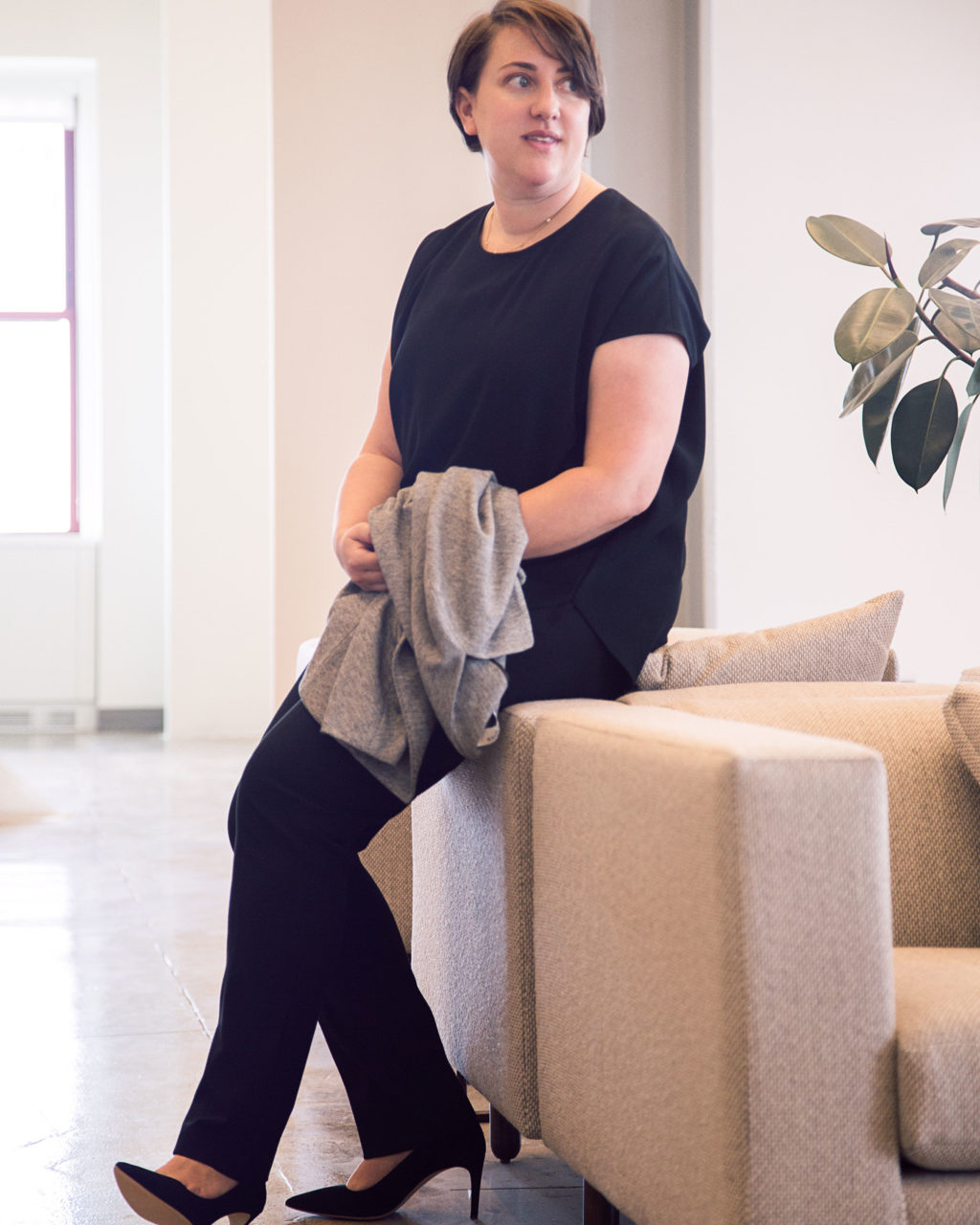
Julie wears the Didion top in black, the Foster pant in black, the Five Stone necklace, and the Vanessa pump in black. (She’s holding the Wilson jacket in escher houndstooth.)
I KNEW THAT EDIE WAS SPECIAL right away—she affected me personally because I had started dating women about three months before I met her. She was a great person to know, especially at that time in my life. I also knew her case was important. I didn’t think it would end up going to the Supreme Court, because I just wasn’t thinking that far ahead. The federal government had been defending the [DOMA] statutes in courts around the country, but what made our case unique was that it was in a circuit court, where there wasn’t a precedent for evaluating laws that discriminated against gays and lesbians. I remember I was with my now-wife, who was my girlfriend then, in an airport when I got an email from Robbie telling me that President Obama wasn’t going to defend the statute in our case. It was such a big deal that I started crying right there, in the middle of the terminal. From there, things changed quickly.
BEING AT THE SUPREME COURT is hard to describe. We’d worked on the case for years, and I knew it would impact thousands of people, including me. A couple of days before the argument, I went on Facebook and everyone I knew had changed their profile picture to the red and pink “equals” sign. I felt like we had so much support. It was something that the country was so ready for, and that felt incredible. Edie was a big part of it. When people saw her and her relationship with her spouse, it helped them understand that marriages between gay people are the same as marriages between straight people, and the damage caused by not recognizing those marriages is real. Edie showed people that this is what marriage is supposed to be about: forty years together, in sickness and in health. And we couldn’t just ignore the fact that she was married because her spouse was a woman.
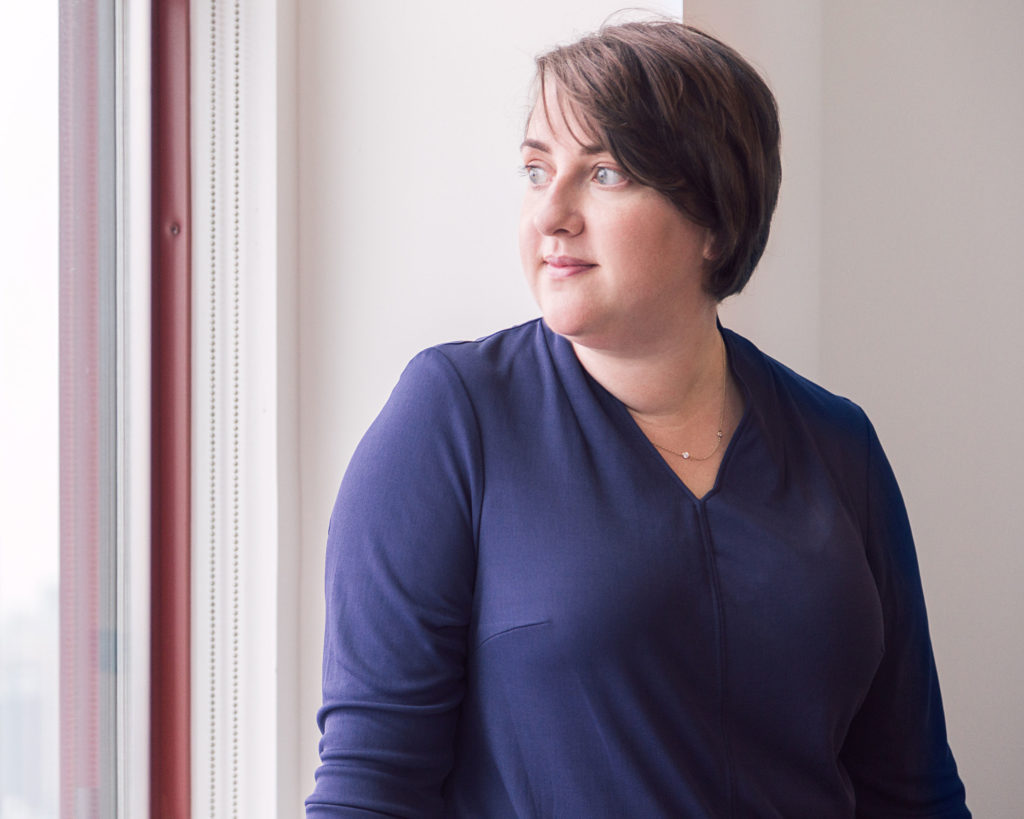
Julie wears the Wilder 2.0 shirt in lake blue.
ON THE DAY THAT WE ARGUED EDIE’S CASE in front of the Supreme Court, we had to be up at four in the morning to be sure we got there on time. It was very surreal. Of course, it’s easier to say this now that we’ve won, but it’s what most lawyers dream of for their careers, and I had only been practicing for about seven years. When the decision came through, we were all at Robbie’s house, sitting around the table with our computers, with Edie and lots of other people that we’d worked with. When we found out, we cried and hugged, and went to Stonewall that night to celebrate.
TO RECHARGE, I LOVE being with my friends and my wife. When I’ve been working hard and feeling stressed, I want to go out and see people and go dancing. And if I need to be alone to take my mind off something, I’ll watch bad TV and make mixes on Spotify. I like being around people, and one thing I’ve always enjoyed about being a lawyer is that it’s collaborative—at least, the kind of law I practice is. You’re always working through problems and talking through things in a team. I find it really fun.

Julie wears the Didion 3.0 top in black, the Foster pant in black, and the Five Stone necklace.
THERE ARE TIMES WHEN I’M CONSCIOUS of both being a woman and being younger than a lot of other lawyers. I have to remind myself that projecting confidence is not just a good trait, but also part of my job. It’s important that people trust me. I give myself pep talks, and I also practice a trick that I learned from a public speaking coach at Paul, Weiss: She taught me to speak like I’m answering a series of questions, since I’m more comfortable in casual conversation. I’m not good at reading a prepared statement because it doesn’t come naturally to me, and I tend to get more nervous. So I ask myself questions and then speak like I’m having a dialogue. For example, I’d think to myself, Why are we here? And then, out loud, I’d say, “I’m here to talk to you about why I love MM.LaFleur.” Why do you love MM.LaFleur? “It’s comfortable and well-made.” It helps me speak naturally, without sounding stiff or scripted. Then my personality comes through, and I’m not so nervous.
I HIGHLY RECOMMEND MEETING with a public-speaking coach if you ever have the opportunity. It’s good to think about how you can improve something that lots of people don’t really focus on. We work so hard on the substance of what we deliver in our jobs, but not many people sit down and talk through how to convey who they are and what they want in an intimidating situation.
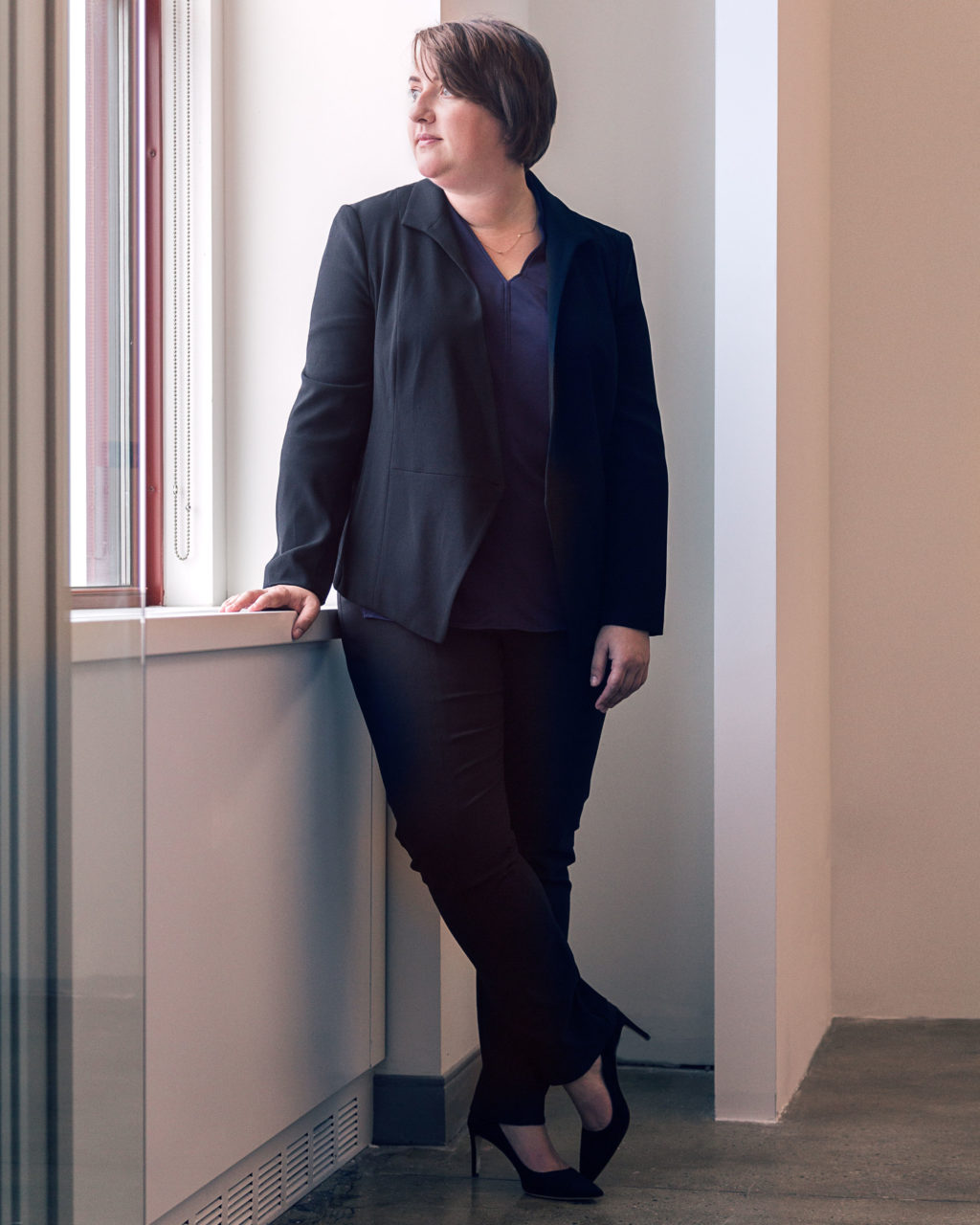
Julie wears the Wells 2.0 jacket in black, the Wilder 2.0 shirt in lake blue, the Foster pant in black, the Vanessa pump in black, and the Five Stone necklace.
WHEN IT COMES TO STYLE, I’ve learned to move away from buying a lot of clothes that are just “okay,” and toward investing in pieces that I know will wear well all day, without wrinkling or getting uncomfortable. I also like having something about my outfit that still feels personal to me, whether it’s a sweater vest—which are my thing—or a unique pattern. There also came a point where I just stopped wearing skirts and dresses. I don’t like wearing them, so I stick to pants now. It means that I’m never uncomfortable in what I’m wearing. I do love heels, but I won’t wear them if I have to walk to a meeting. I’m grateful for the loafer trend.
WE CREATED OUR FIRM, which is only four months old, so that we could build the place where we wanted to work. Our objective is to do sophisticated litigation with a real commitment to the public interest, as well as pro bono work. The people who work here are brilliant, far more so than I am, and have a glimmer in their eye about the cases we’re given. We are currently working on a lawsuit against the white supremacist, neo-Nazi individuals that organized the violence in Charlottesville. That’s not a case that anybody wants to bring, and it’s not something I’ve ever imagined confronting in my lifetime, but I’m really proud to be doing it. We’re also representing a woman who wrote a Facebook post about an experience she had with Brett Ratner, and is now being sued. We’re representing her pro bono. These are the reasons we became lawyers: We want to give back and represent people who need it.
Like what you saw? There’s more. Start by shopping our MM classics here.
Photographs by Andrew Segreti.







